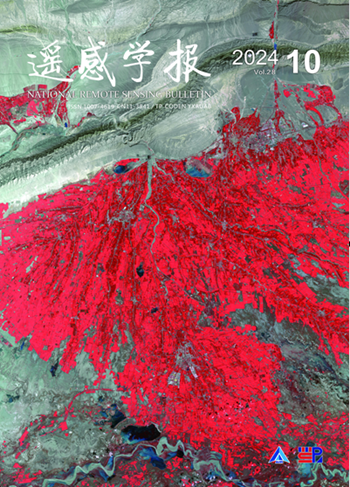分形维数量化林分结构复杂性的不可扩展性研究
引用次数: 1
摘要
树冠结构复杂性是一个重要的新兴森林属性,基于光探测和测距(lidar)的分形维数已被认为是其在单株水平上的有力度量。然而,目前基于激光雷达的估计方法对数据特征高度敏感,其从单株到林分的可扩展性尚不清楚。本研究提出了一种考虑Shannon熵的改进方法来估计激光雷达数据的分形维数,并通过数学推导评估了其从单株到林分的可扩展性。此外,利用115棵树的地面激光雷达数据模拟的280个林分场景,对所提出方法的稳健性和分形维数的可扩展性进行了评估。结果表明,该方法可以显著提高激光雷达分形维数的鲁棒性。数学推导和实验分析都表明,林分的分形维数等于其中分形维数最大的树的分形维数,表明其从单株到林分的不可伸缩性。分形维数的不可伸缩性揭示了其在林冠结构复杂性量化中的有限能力,并表明分形几何下林分的幂律标度理论是由其优势树而不是整个群落决定的。尽管如此,我们认为分形维数仍然是单株冠层结构复杂性的一个有用指标,可以与其他林分水平指数一起用来反映冠层结构复杂性“树-林分”相关性。本文章由计算机程序翻译,如有差异,请以英文原文为准。
Nonscalability of Fractal Dimension to Quantify Canopy Structural Complexity from Individual Trees to Forest Stands
Canopy structural complexity is a critical emergent forest attribute, and light detection and ranging (lidar)-based fractal dimension has been recognized as its powerful measure at the individual tree level. However, the current lidar-based estimation method is highly sensitive to data characteristics, and its scalability from individual trees to forest stands remains unclear. This study proposed an improved method to estimate fractal dimension from lidar data by considering Shannon entropy, and evaluated its scalability from individual trees to forest stands through mathematical derivations. Moreover, a total of 280 forest stand scenes simulated from the terrestrial lidar data of 115 trees spanning large variability in canopy structural complexity were used to evaluate the robustness of the proposed method and the scalability of fractal dimension. The results show that the proposed method can significantly improve the robustness of lidar-derived fractal dimensions. Both mathematical derivations and experimental analyses demonstrate that the fractal dimension of a forest stand is equal to that of the tree with the largest fractal dimension in it, manifesting its nonscalability from individual trees to forest stands. The nonscalability of fractal dimension reveals its limited capability in canopy structural complexity quantification and indicates that the power-law scaling theory of a forest stand underlying fractal geometry is determined by its dominant tree instead of the entire community. Nevertheless, we believe that fractal dimension is still a useful indicator of canopy structural complexity at the individual tree level and might be used along with other stand-level indexes to reflect the “tree-to-stand” correlation of canopy structural complexity.
求助全文
通过发布文献求助,成功后即可免费获取论文全文。
去求助
来源期刊

遥感学报
Social Sciences-Geography, Planning and Development
CiteScore
3.60
自引率
0.00%
发文量
3200
期刊介绍:
The predecessor of Journal of Remote Sensing is Remote Sensing of Environment, which was founded in 1986. It was born in the beginning of China's remote sensing career and is the first remote sensing journal that has grown up with the development of China's remote sensing career. Since its inception, the Journal of Remote Sensing has published a large number of the latest scientific research results in China and the results of nationally-supported research projects in the light of the priorities and needs of China's remote sensing endeavours at different times, playing a great role in the development of remote sensing science and technology and the cultivation of talents in China, and becoming the most influential academic journal in the field of remote sensing and geographic information science in China.
As the only national comprehensive academic journal in the field of remote sensing in China, Journal of Remote Sensing is dedicated to reporting the research reports, stage-by-stage research briefs and high-level reviews in the field of remote sensing and its related disciplines with international and domestic advanced level. It focuses on new concepts, results and progress in this field. It covers the basic theories of remote sensing, the development of remote sensing technology and the application of remote sensing in the fields of agriculture, forestry, hydrology, geology, mining, oceanography, mapping and other resource and environmental fields as well as in disaster monitoring, research on geographic information systems (GIS), and the integration of remote sensing with GIS and the Global Navigation Satellite System (GNSS) and its applications.
 求助内容:
求助内容: 应助结果提醒方式:
应助结果提醒方式:


